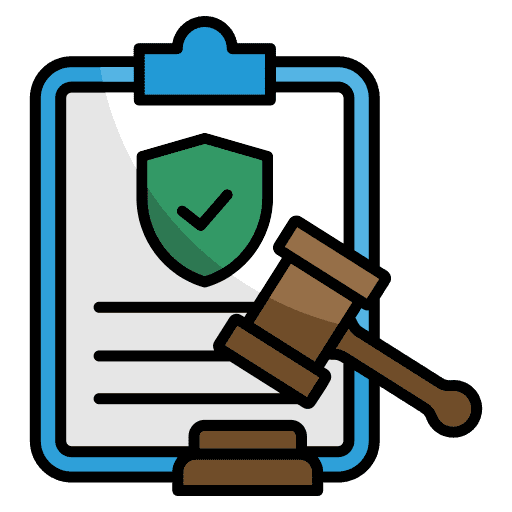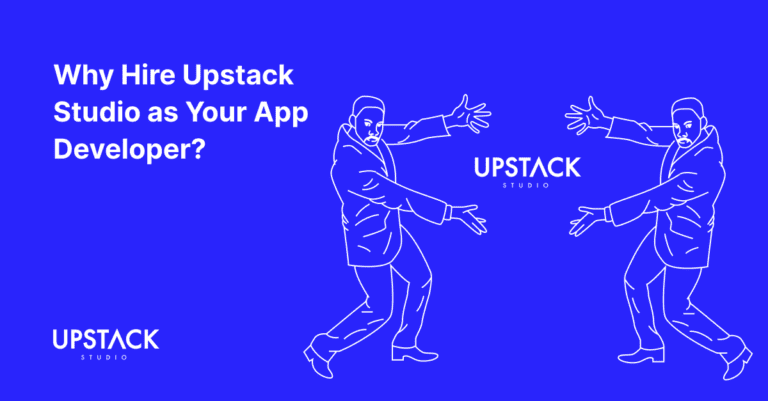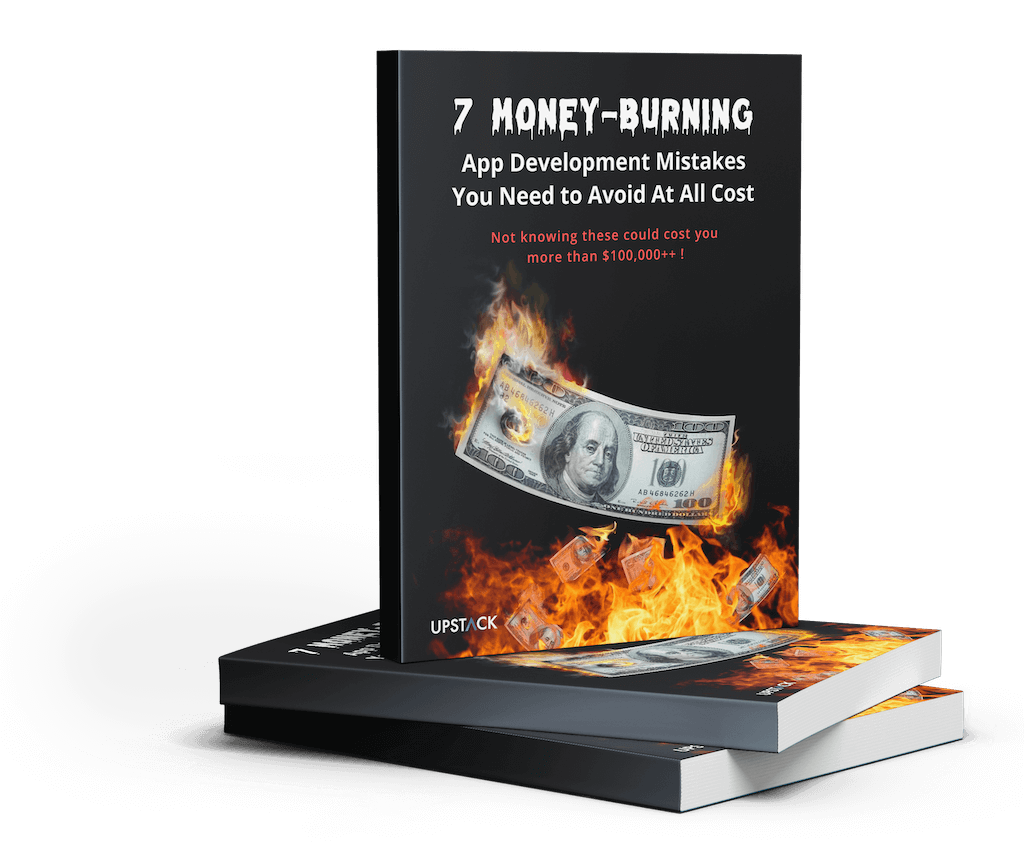Defence against IP Theft
One of the concerns our overseas clients have when considering Upstack Studio for offshore software development is the security of their ideas–what if we steal and build it for ourselves?

This is where a Non-Disclosure Agreements (NDAs) offers a layer of assurance.
In this guide, we’ll share our own NDA as a downloadable template and explain how it protects clients who engage our app and software development services from overseas.
Or click here to skip to where we explain how to actually protect yourself!
Free App Development NDA Template
For context, Upstack Studio is based in Malaysia, but we have developers working in Indonesia and serve clients as far as the US, so we’re quite comfortable with managing remote arrangements.
Here’s the exact NDA we use with our overseas clients–feel free to download it.
If you just wanted the template, you can stop reading here–just remember to read it carefully and make adjustments to align with your requirements!
For an in-depth understanding of NDAs, keep reading as we break down each of the key clauses.
Key Clauses Explained
This NDA is designed to protect client ideas, data, and plans at every stage — from their first conversation with us, through development, and even after our collaboration ends.
1. Definition of Confidential Information
This section clearly defines the scope of ‘Confidential Information’ in the context of our agreement, and includes any data a client discloses to us in the form of:
- technical designs
- software details
- marketing plans
- other proprietary information
Importantly, it includes information shared in writing, orally, or visually, and documents we create based on that information like reports or evaluations.
How it protects the client:
The clause ensures all information the client shares falls under the protection of the NDA.
2. Exclusions
This section clarifies what information is not confidential, and in our case, it includes information:
- already publicly known
- legally received from a third party without restrictions
- developed by Upstack Studio without client information
This prevents any unnecessary restrictions on Upstack Studio while still ensuring your confidential information remains protected.
How it protects the client:
It doesn’t! It protects developers by ensuring we don’t get hit by unfair restrictions on information use and disclosure for data that is already available or not tied to the agreement.
3. Use of Confidential Information
This clause is our way of guaranteeing to only use client confidential information when necessary to complete their app or SaaS development project.
This includes only disclosing it to team members actually working on the project.
How it protects the client:
This makes sure your information isn’t used for anything beyond the purpose of the agreement, and is only shared internally based on needs
4. No Obligation to Disclose
This section is pretty straightforward and states the client is not obligated to disclose information to us if they don’t think it’s relevant to the software they need.
This of course goes both ways; we don’t have to share information we think is irrelevant either.
How it protects the client:
This ensures neither party has to disclose anything they’re not comfortable with.
5. Disclaimer
This section states we assume any information you provide is correct and accurate and use it as is for the evaluation and development process.
This means we cannot be liable for losses resulting from the use of this information.
How it protects the client:
While this mainly protects developers, we believe it strongly incentivizes clients to ensure internal information they provide is accurate and up-to-date.
6. Return of Materials
This states that if we don’t proceed with the project or the agreement terminates, all documents and objects containing client information either get returned or destroyed, and if the latter, with written confirmation.
The only exceptions are legally required IT backups and storage but these will not be used for anything else and the client has a copy for their legal records.
How it protects the client:
It ensures that once the agreement ends, the client’s sensitive information is not kept around unnecessarily and is disposed of properly.
7. No Licenses Granted
This section states that just because clients disclose information to us doesn’t mean they grant us any rights, licenses, or ownership over your ideas, or copyrights and trade secrets.
How it protects the client:
This ensures the client’s proprietary information, like patents or trademarks, isn’t taken or used by the other party without permission.
8. Computer Program
If your information includes software, this section prohibits us from transferring, copying, modifying, adapting, translating, or creating derivative works without your written permission.
How it protects the client:
This prevents the client’s software or tech from being misused or altered without proper authorization, safeguarding their intellectual property.
9. No Obligation to Proceed
This clarifies that this NDA does not obligate either of us to go any further. We are both still free to choose not to proceed with the software development project after initial discussions.
Think of it as a Memorandum of Understanding.
How it protects the client:
This protects both you and the developer from being forced into an agreement or business relationship they’re not interested in or ready for.
10. Non-Disclosure of Negotiations
This means we agree not to disclose to any third party that we are even holding discussions or negotiations without a client’s written approval, unless it’s strictly related to the actual software development project we are being engaged for.
How it protects the client:
It keeps your business plans and negotiations private, avoiding leaks that could affect competitive position.
11. Non-Exclusivity
This clause confirms that clients are free to deal with other developers who offer similar services.
Very few developers want to forcibly lock in their clients, and we’re not one of them.
How it protects the client:
The client isn’t locked into working only with one company, giving them flexibility to explore other opportunities.
12. Term
This one is very straightforward and just sets out the start and end of our agreement.
We say straightforward, but that doesn’t make it any less important.
How it protects the client:
It sets a clear timeline for how long the client’s information will be protected, and they can choose to extend the agreement if needed.
13. Survival
This means that even after the NDA expires, our obligations to keep client information confidential continues for at least another five years.
This can be negotiated, of course, but in the tech space information that is five years old is rarely going to make a difference.
How it protects the client:
This gives the client extra protection after the agreement ends, ensuring that their information remains safe long after any deal or discussion concludes.
14. Disclosure to Affiliates
This section states that while we may share client information with our affiliated entities, it’s on a strict need-to-know basis and under the same protections outlined in this agreement.
Importantly, Upstack Studio is responsible for any breach of this agreement by its affiliates.
How it protects the client:
It allows the client’s information to be shared within a company’s network if needed, but it ensures the same level of protection is maintained.
15. Compliance with Export Laws
This makes sure both sides follow export laws that apply to the information being shared. Remember, this is an offshore project and transferring data and software across international borders is still treated as exporting!
How it protects the client:
This ensures that no information is shared or used in violation of any laws, protecting the client from legal issues.
16. Miscellaneous
What it means:
This clause outlines that this agreement is the full agreement between the parties and can only be changed in writing. Any failure to enforce any part of the agreement doesn’t mean it’s waived.
How it protects the client:
The client’s interests are safeguarded because it ensures that the terms can’t be changed without agreement and that their rights are fully protected even if one clause isn’t enforced immediately.
17. Applicable Law and Courts
This specifies that any disputes will be resolved in the courts of Kuala Lumpur, Malaysia, where Upstack Studio is based.
How it protects the client:
Once again, this protects us! We only set it this way because we’re based in Malaysia so are more familiar with her rules.
What an NDA Means for You
Here’s the bottom line: With the clauses in the previous section, the NDA compels developers like us to:
- Keep your information private
- Use your information for sole the purpose of building your software.
- Limit internal access to your information to the people who need it.
- Avoid copying, altering, or reusing your code or assets without written permission.
- Return or destroy your materials once the project ends.
- Not claim ownership or rights over your ideas, brand, or IP.
- Stay silent about our negotiations.
- Respect your freedom to explore other developers or solutions.
- Keep things confidential, even after the NDA ends, for up to five more years.
You stay in control of your ideas, and we stay accountable to protect them.
How Enforceable Are NDAs?

It’s an unpleasant truth, but NDAs—no matter how robust—are hard to enforce, especially when dealing with international parties.
The reality is even if your NDA is ironclad, pursuing legal recourse could cost more than the value of your project unless it iinvolves millions of dollars, with the potential for even more.
But for most offshore projects, pursuing legal action over a breach is unlikely to be cost-effective.
How to Defend Against Shady Developers
Be uncompromising during the hiring phase and vet developers thoroughly, which means:
- ask for references
- check their catalog of previous work
- do some basic desktop detective work to check their reputation
If you’ve never done this before, check out our list of interview questions for developers.
Also, going offshore means you have unlimited choice so there’s no rush to hire the first developer you talk to.
If you do all this, a software development NDA can be the icing on the cake.
Oh, and if you only hire based on who’s cheapest, the best NDA in the world won’t save you.
Developers Want Money, Not Ideas!
It’s natural to feel protective of your app or SaaS idea, especially when working with offshore developers. But here’s a comforting truth: developers don’t want to steal your idea.
We just wanna do good work and get paid.

Our focus is on building apps for others, and stealing ideas doesn’t fit into that business model!
So if you’re considering offshoring your next app development project, happy offshoring.
If you’re looking to build a mobile application, check out our portfolio of past projects and contact us if you like what you see. Also, consider joining our mailing list for a one-stop resource on everything from micro-SaaS validation all the way to execution and promotion. Get a nifty list of questions to ask app developers when you sign up!
App Developer Interview Questions Template
Download this template now so you know exactly what to ask App Development Agencies! Let us know where should we send it through the form below.



